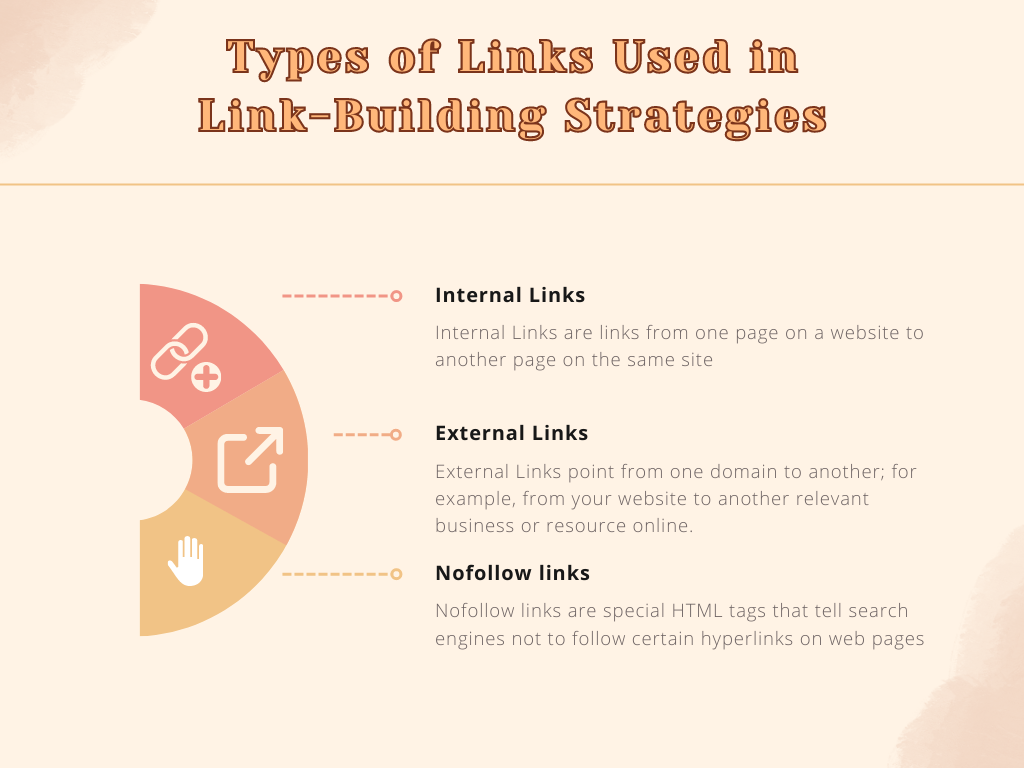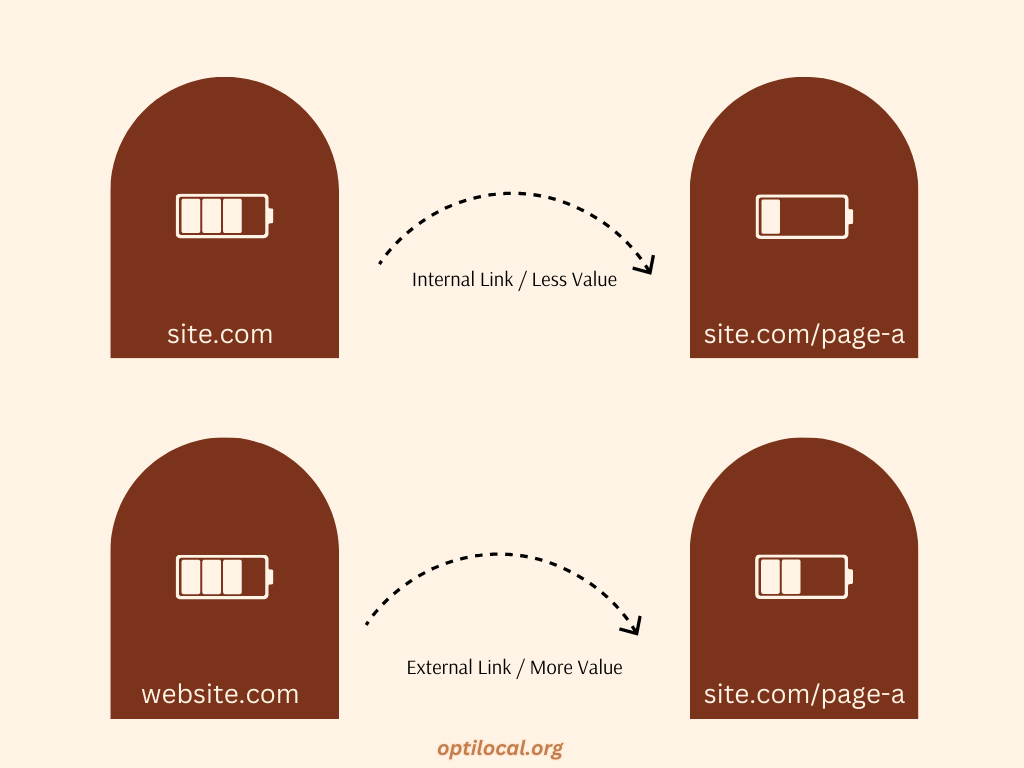Creating a natural backlink profile is essential for any website’s success. But what exactly constitutes a natural backlink profile, and how important is anchor text?
Link building can be complicated, but it can be manageable if you understand the basics of link-building strategies, techniques for creating quality links, best practices for successful link-building campaigns, and methods to measure your results.
In this blog post, we will explore these topics in detail so that you can create an effective link-building strategy tailored specifically to your needs.

More Resources :
What is a Natural Backlink Profile?
A natural backlink profile is a collection of links that point to your website from other websites. These links are typically earned through organic link-building efforts, such as guest posting, content marketing, and broken link-building.
For anyone building links or actively seeking out backlinks for their site, one of the most important things to remember is the look of your backlink profile. Having a natural backlink profile can benefit local businesses because it helps improve their search engine rankings and visibility online.
When building a natural backlink profile, evaluating the relevancy of the linking sites is essential. First, the relevancy of the linking sites should be assessed. Links from relevant sources will have more weight in terms of SEO than those from unrelated sites. Additionally, the authority of the linking sites should also be evaluated; links from authoritative websites carry more value than those from low-authority ones.
Anchor text is another factor that contributes to an effective natural backlink profile. Anchor text refers to the words used within hyperlinks that direct users towards other webpages or websites – these words act as keywords for search engine crawlers, so they know what type of content they’re looking at before they click on it.
When using anchor text in link-building strategies, you want to use descriptive yet concise phrases that accurately describe what users will find if they click on them. This way, both humans and search engines understand where each link leads.
Additionally, using different variations of anchor texts instead of repeating the same phrase multiple times helps create a diverse and natural-looking portfolio which can help boost your website’s ranking potential.
How Important is Anchor Text?
Anchor text is an important factor in any link-building strategy. It provides a context for the link and can help search engines understand what the page being linked to is about. Anchor text also directly impacts click-through rates (CTR) from organic search results.
When employed suitably, anchor text can be a potent asset in amplifying content for SEO optimization. The key to using anchor text effectively lies in understanding how search engine algorithms view and interpret it and how users interact with it.
Why Are Anchor Texts Important for SEO?
Anchor text is an important factor in (SEO). Anchor text is the clickable words that appear on a web page and link to another page. Google uses anchor text to determine the relevance of a website’s content for certain keywords or phrases. This means that if you want your website to rank higher in search results, it’s important to use relevant anchor texts when linking from one page of your site to another.
For example, suppose you have a blog post about local marketing services such as website optimization and online reputation management. In that case, you could include links with keywords like “local marketing services” or “website optimization” within the body of the article. This helps Google understand your content and increases its chances of appearing higher up in search results when someone searches for those terms.
The definition of anchor text is simple
Words or phrases hyperlinked within webpages or other digital documents such as PDFs or emails. These links usually point toward another webpage or document related to the topic and provide additional information for readers who want more detail on a particular subject matter discussed on the page they’re viewing.
Using relevant anchor texts helps increase visibility by helping humans and search engine bots better understand each page’s content. This allows them to index pages faster and more accurately, leading to higher rankings in SERPs (Search Engine Results Pages). When creating internal links within your website, you should use keyword-rich anchor texts that describe what visitors will find when they click through – this will help boost overall user experience while increasing your chances of ranking higher in SERPs.
Types of Links Used in Link-Building Strategies
Link building is an important part of any successful local marketing strategy. It helps to increase the visibility and authority of a website while also improving its ranking in search engine results pages (SERPs). Link-building techniques can involve a variety of links, all with their pros and cons.

Internal Links are links from one page on a website to another page on the same site. They help visitors navigate between different sections or topics within a website and help search engines understand how the content relates. Internal links should be used sparingly but strategically – too many internal links can confuse users and search engines.
External Links point from one domain to another; for example, from your website to another relevant business or resource online. External linking can be beneficial because it gives your site more credibility when other websites link back to you; however, it’s important not to overdo it – too many external links could appear spammy or even lead people away from your site altogether.

Nofollow links are special HTML tags that tell search engines not to follow certain hyperlinks on web pages. These tags have been around since 2005 and were created by Google to prevent “link spam,” – where spammers create hundreds of low-quality backlinks pointing toward their sites to boost their rankings artificially. Nofollow links do not pass any SEO value onto other sites, so they should only be used if there is no other option for linking out externally (for example, if you want to credit someone else’s work without actually sending them traffic).
Techniques for Creating Quality Backlinks
Constructing effective connections is a key element of any successful link-building tactic, and there are numerous ways to achieve this, such as:
It is a popular technique for creating quality backlinks. It involves writing content for another website in exchange for a link to your website or blog. This technique helps build relationships with other websites in your niche and increases your brand’s visibility online. When using this technique, it’s important to make sure that the content you write is relevant and useful to the audience of the website you’re guest posting on. Additionally, it should contain natural NLP keywords related to your industry so that readers can easily find it when searching online.
Broken Link Building is another effective way of creating quality backlinks. This involves finding broken links on other websites within your niche and replacing them with working ones from your site or blog posts where applicable. This helps improve user experience by providing visitors access to more reliable information sources while increasing traffic to your site through increased visibility on search engines like Google or Bing.
Best Practices for Creating Quality Backlinks
For successful backlink creation, three key best practices should be considered. Creating quality backlinks is an essential part of any successful link-building strategy. With careful attention to relevancy, authority, variety, and diversity in your links, you can ensure that your efforts are effective and sustainable.
When looking for potential link sources, make sure they have content related to your niche or industry to ensure the links will help you rank better. Additionally, target sites with high domain authority, as these links, carry more weight than those from lesser-known sites.
It’s important to get various links (internal, external, nofollow) and different anchor texts so your link profile looks natural rather than forced or spammy. This means using multiple variations of keywords when creating anchor text instead of just one keyword repeatedly.
Quality should always take precedence over quantity when building backlinks. While having lots of backlinks may seem impressive on paper, if most are low-quality, it will only do a little good for your rankings in the long run – and could even harm them due to Google’s Penguin algorithm update targeting unnatural link profiles specifically. Therefore, focus on getting fewer high-quality links from reputable websites instead of trying to acquire hundreds or thousands all at once without any thought given to their value or relevance.
Measuring the Success of Your Link-Building Strategy
Measuring the success of your link-building strategy is an essential part of any digital marketing campaign. Tracking progress, analyzing results, and adjusting strategies as needed are key components for optimizing your efforts, and they are described as the following:
It involves monitoring how many links you have built over a given period and understanding where those links came from. This can be done through various analytics tools such as Google Analytics or Ahrefs to gain insights into the quality of backlinks acquired during a certain timeframe. Knowing which sites are linking to yours will also help you identify potential future link-building opportunities.
It requires looking at metrics like organic traffic, referring domains, and click-through rates (CTR). These metrics provide valuable information on whether or not your link-building efforts impact search engine rankings and website visibility. Additionally, it’s important to look at qualitative data, such as comments left by visitors after clicking on a link placed in content associated with your brand or product/service offerings.
FAQs about What Constitutes a Natural Backlink Profile and How Important is anchor Text?
Conclusion
It is essential to comprehend that all these elements contribute significantly towards attaining fruitful local marketing outcomes. Anchor text plays a major role in the success of your link-building efforts, as it can help to increase visibility and boost rankings for targeted keywords. You can achieve better results from your SEO campaigns by understanding how to create quality links with appropriate anchor texts.